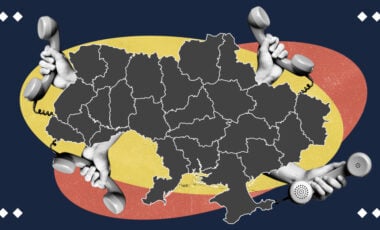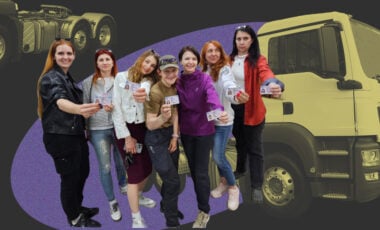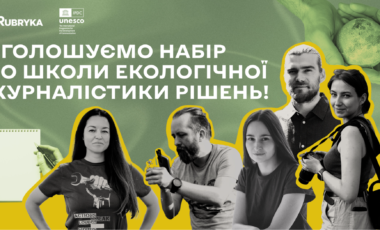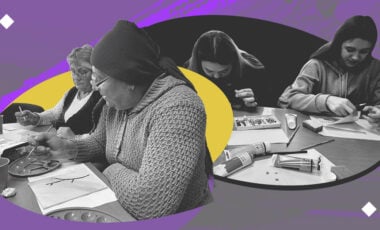Solutions from Ukraine: "YePamiatka" digital platform to register Ukrainian occupied cultural monuments

The amphitheater was constructed on the grounds where an old fortified citadel once stood. Photo: Evelina Kravchenko
Ukraine must quickly register all objects located in the temporarily occupied territories (TOT) and territories affected by hostilities in the State Register of Immovable Monuments of Ukraine. This will allow Ukraine better to influence the amount of reparations from the Russian Federation and legally prove the damage to its cultural heritage, specifically the destruction of significant monuments like Chersonesus in Crimea.
The head of the parliament's Committee on the Organization of State Power, Local Self-Government, Regional Development and Urban Planning, head of the Servant of the People party, Olena Shuliak, stated this.
What is the problem?
It is worth mentioning that the Tavrian occupation authorities have proposed constructing a new building and a "historical and archaeological park" on the site of the once flourishing ancient and Byzantine city-state of Chersonesus in Crimea. This blatant act of destruction is further evidence that Ukrainians cannot afford to wait any longer.
Shuliak clarified that if this monument isn't registered, it won't be officially recognized, and Ukraine won't be able to provide evidence of the harm it has suffered to the international community. This rule should be applied to all monuments, regardless of their location in war zones.
"The Russian occupiers are destroying an archeological monument of world importance – the ruins of the ancient and Byzantine city-state of Tauric Chersonesus in the Crimea, which is included in the UNESCO world heritage. They removed the soil on its territory and fenced off the archaeological remains that were on the surface with observation decks," Shuliak noted.
As the MP pointed out, the occupants also relocated and reconstructed several unearthed objects elsewhere and constructed an amphitheater on the ancient citadel's grounds, which has stressed the original infrastructure. Furthermore, a new building was erected there, falsely claiming to be an ancient structure and naming it the "New Chersonese" park.
With the onset of hostilities, looting and illegal trading of archaeological artifacts commenced, leading to a rise in "black antiquities" activities – where objects are discovered and sold in clandestine auctions.
What is the solution?
Shuliak assured that, first of all, this is an indisputable loss of the assets of Ukrainian history, which happened due to the occupier's fault.
Alternatively, if Ukrainians fail to register the monuments located on the TOT promptly, they risk losing the chance to receive reparations from Russia. This register will serve as the basis for determining the size of compensation for any destroyed monuments.
Registering archaeological monuments will offer an extra layer of protection against looting by occupiers, which has been occurring systematically for the past decade.
How does it work?
According to the official, this must be done solely in digital format, which is made possible by the "YePamiatka" registry. Therefore, digitizing documents from today's areas of conflict is crucial.
Even during times of peace, the transportation of archaeological artifacts was not adequately managed, resulting in the removal of many items, such as settlements, hillforts, parking lots, barrows, and burial mounds from the National Register of Immovable Monuments of Ukraine and regional lists of monuments. Efforts are currently being made to rectify this issue.
"Therefore, today it is extremely important to digitize documents from the area of hostilities – not all archives managed to be taken out, and in the end paper documents are easily destroyed. Accordingly, if we have information about the state of the monument in digital format, we will have the opportunity to restore the object to its state. The occupation regime destroyed it," Shuliak concluded.
For reference:
A particular working group of the Verkhovna Rada [Ukraine's parliament – ed.] is being formed to protect cultural heritage objects. Along with members from the Urban Planning Committee, the group will also consist of representatives from the Humanitarian and Information Policy Committee, members of Parliament, officials from the Ministry of Community Development, Territories and Infrastructure (also known as the Ministry of Reconstruction), the Ministry of Culture and Information Policy, as well as experts and scholars in the field of cultural heritage.
The task of the working group is to work out legislative changes that will help solve the problem of arbitrary destruction of monuments, which has worsened as a result of Russian armed aggression.
As Rubryka stated, since 2014, Russia has been openly waging war against Ukraine. This includes humanitarian aggression, where the enemy has been destroying, looting, and claiming ownership over Ukrainian historical and cultural sites. The enemy has committed thousands of crimes, including attempts to erase Ukrainian national memory by destroying archaeological, architectural, and cultural landmarks. Learn more about these crimes in our article: "Stolen heritage: Russia's archaeological crimes."

Музей Голодомору закликає Киян долучитися до створення виставки: як розповісти історію своїх рідних

Херсонський художній музей ідентифікував ще одну картину, викрадену російськими загарбниками

"Treasures of Crimea. Return". The exhibition of "Scythian gold" saved from the Russians has opened in Kyiv




















































